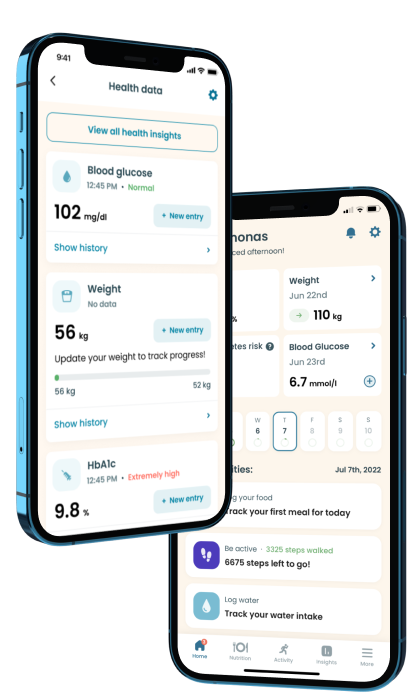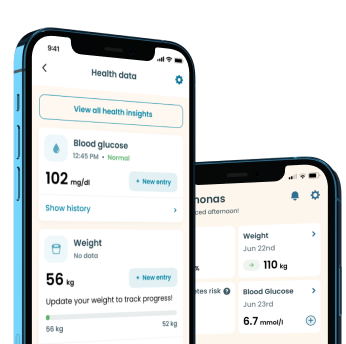Ragi and Diabetes

The United States Department of Agriculture (USDA) recommends that whole grains make up at least 50% of our total grain intake. This is more important for people with diabetes since whole grains have shown impressive potentials in managing diabetes and its many complications.
Ragi, also referred to as finger millet, is a whole grain that offers numerous diabetes-friendly benefits. Here’s all you should know concerning the intake of ragi and diabetes management.
Nutritional Values of Ragi
According to the USDA, one cup of raw millet offers 146 g of carbs and 756 cal. While these values may seem outrageous, its fiber content of 17 g alongside its 22 g of protein makes the aforementioned figures less scary.
However, its glycemic index is somewhat on the high side, with a value of about 70–80. Hence, to maintain control over your blood sugar levels, it’s advised you don’t eat just too much of these grains at once.
On the other hand, ragi is an excellent choice for diabetes due to its high potassium, phosphorus, and magnesium content.
Take a quiz
Discover what Klinio app can do for you
Healthy diabetes meal plan crafted just for YOU

Personalized workouts with no equipment needed

Track your progress with smart tracking tools

Is Ragi Beneficial for Diabetic Patients?
Despite ragi being a high-carb good, it’s nutrient-dense food with numerous health benefits for diabetic patients. Its medicinal characteristics aid the management of blood sugar levels and high unfavorable cholesterol levels, as we’ll observe below.
Antioxidant Properties
Oxidative stress occurs when there’s an imbalance in the level of antioxidants and free radicals in the body. This physiological response increases the chances of developing diseases like diabetes or heart disease.
Ragi is proven to lower oxidative stress that may induce ailments like diabetes. Namely, it may raise the levels of potent antioxidants like vitamins C and E, glutathione, and superoxide dismutase. These are attributed to its phenolic, phytate, and tannin content.
Controls Blood Sugar levels
A study on diabetic rats demonstrated that consuming a 20% finger millet seed coat matter diet for six weeks may lower fasting hyperglycemia, as well as serum creatinine, urea, and albumin levels — compounds associated with increased diabetes risk.
It Aids Weight Loss
According to research on ragi and diabetes, feeding diabetic rats may induce as much as a 28% loss in weight. Namely, the high dietary fiber content keeps the stomach fuller for longer, preventing unpleasant cravings.
Promotes Bone Health
Weakened bones are a common trend in diabetes patients due to a low bone mineral density. These may also trigger joint disorders following nerve damage (diabetic neuropathy). Once again, ragi comes to the rescue!
Ragi, due to its high calcium content, may help prevent certain diabetes-induced bone disorders in diabetes patients, e.g., osteoporosis.
It Lowers "Bad" Cholesterol
Ragi appears to have the ability to lessen the risk of cardiovascular disease, according to new research.
Oxidized LDL (low-density lipoprotein) “bad” cholesterol causes artery inflammation, leading to arteriosclerosis and an increased risk of heart attack or stroke. Thankfully, ragi lowers serum triglyceride levels and prevents lipid oxidation and LDL cholesterol oxidation.
Antidepressant Properties
The rigors of diabetes management can be quite unpleasant and may contribute to depressive symptoms. Ragi is a natural antidepressant, and studies have shown that eating it daily can assist with sleeplessness, anxiety, and sadness. Ragi's amino acids also act as a natural relaxant.
Further Research on Ragi’s Diabetes-Friendly Benefits
There are several studies linking diabetes and ragi. Ragi and other millets are higher in minerals, fiber, and amino acids compared to white rice and are a good choice for people with diabetes.
Furthermore, eating ragi expedited wound healing, reduced blood glucose levels, and enhanced antioxidant status in diabetic rats in a 4-week research, reinforcing this grain’s potent health qualities.
How Much Ragi Should a Diabetic Eat?
According to the CDC, most people with diabetes should ensure they get just about half of their calories from carbs — close to 900 calories based on a 1,800-calorie diet. Since a cup of ragi contains a whopping 756 cal, it might be best to stick to a maximum of one cup daily.
However, it’s important to note that ragi may not be the only source of carbs in your daily diet. Hence, you should include other carbs when counting your calories.
If you’re still unsure about how much ragi you should eat, a dietician can assist by creating a simple meal plan for you.
How Should Diabetics Eat Ragi?
Here are some healthy recipes you can try out the next time you lay your hands on this whole grain:
- Baked ragi chakli
- Ragi roti
- Ragi samosa
- Ragi wheat dosa
Summary
Ragi, also known as finger millet, is one of the most nutritional and balanced cereals available, and its diabetes-fighting properties cannot be overstated. Still, please consult with your dietician or physician on the best ways to incorporate it into your meal plan.

Download Klinio app!
Get more by downloading our free Klinio App. Analyze your health, form new habits and manage your diabetes anytime, anywhere.
OR
SCAN QR CODE



GET THE APP











